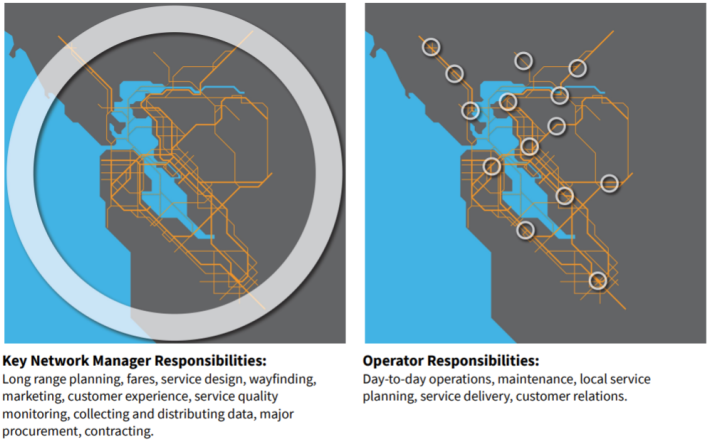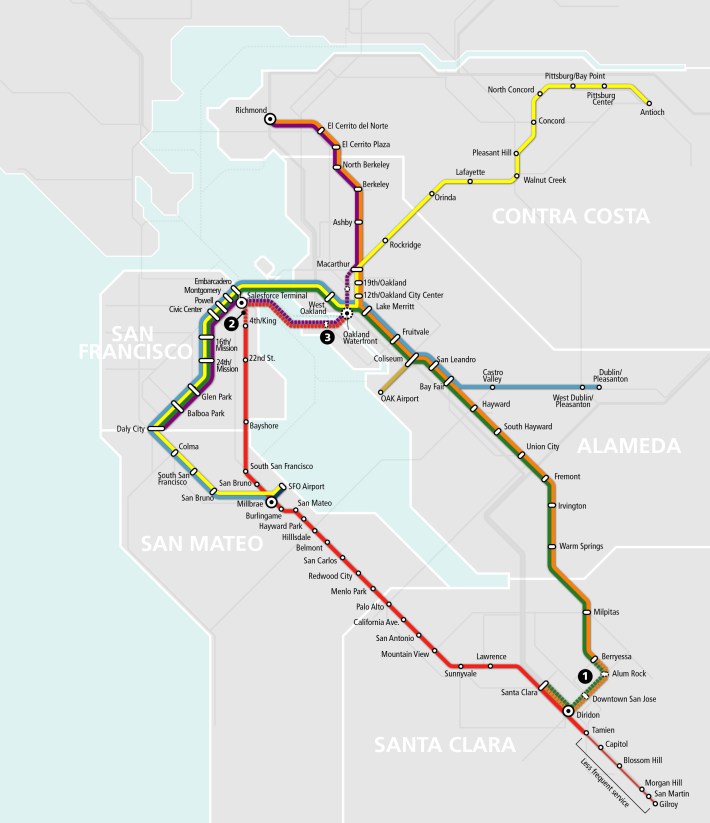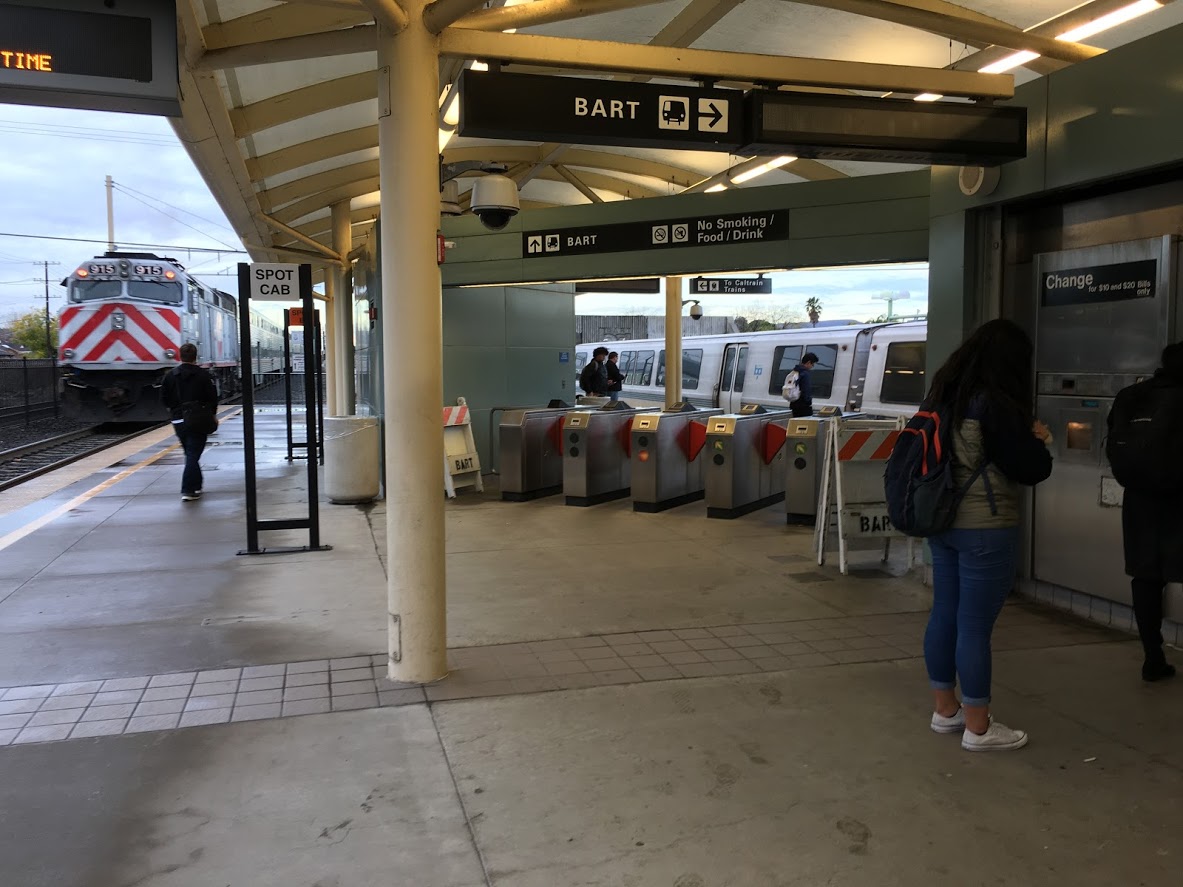In the Bay Area, we have chosen to make driving privately owned cars extremely easy, with a seamless network of highways and streets supported by plentiful inexpensive parking.
By contrast, the Bay Area’s transit network--in which 27 different agencies provide service with little coordination or regional vision--is fragmented and inconvenient for riders, with poor connections, duplicative fares, and unreliable service.
Our seamless driving network didn’t evolve by accident--it was designed that way, and continues to be governed by public authorities that prioritize that seamless driving experience across jurisdictional boundaries.
To make transit seamless, the Bay Area needs to follow the lead of transit-first regions around the world and set up a lead authority--what we call a network manager--with the mandate and resources to integrate and expand all forms of public transportation in our region into a cohesive, easy-to-use network.
Today, Seamless Bay Area is releasing a new report, Governing Transit Seamlessly: Options for a Bay Area Transportation Network Manager, that outlines how the Bay Area can do just that.

The culmination of years of research, interviews, and advocacy, our report analyzes potential options for a Bay Area transit network manager that could help bring transformative change to our transit system. We are hopeful that it will help to fuel an ongoing regional conversation about how to create a truly comprehensive, equitable, and robust transit network in the Bay Area, and inform ongoing discussions by leaders involved in the region’s Blue Ribbon Transit Recovery Task Force.
Based on research and best practices from transit systems around the world, our report identifies the key functions of our transit system that should be overseen at a regional scale by a Bay Area network manager--from common fares and service design to major route planning, wayfinding, marketing, and data. We then outline four network management proposals for discussion and comparison, corresponding to three dominant models in high performing transit regions and one model proposed by Bay Area transit agencies.
The options include:
- Option A - Altered MTC Network Manager: A network manager based within the Metropolitan Transportation Commission (MTC) that coordinates transit but doesn’t directly run any of it, achieved by altering MTC’s board structure, authorities, and relationship with transit agencies.
- Option B - Regional Transit Agency Network Manager: A network manager that both coordinates transit services across the region and directly operates the regional rail, bus, and ferry networks, based on a merger of BART, Caltrain and other regional transit services under one governing board.
- Option C - Universal Transit Agency Network Manager: The creation of a universal transit agency, achieved by merging all existing Bay Area transit agencies under one governing board, with existing agencies becoming wholly owned operating divisions or subsidiary companies.
- Option D - Enhanced Clipper Executive Board: The enhancement of the existing Clipper Executive Board, a board made up primarily of transit agency general managers, to have an expanded set of responsibilities to promote greater coordination across a set of network management functions.
The report explores how to optimize the institutional structure for each network manager option, including the composition of governing boards, and evaluates each option based on key effectiveness and feasibility criteria.
So which is the best option? While we believe all four options would provide some benefit to the region relative to the status quo, our report concludes that Option B--a Regional Transit Agency Network Manager--represents our region’s best opportunity to achieve a seamless, rider-first transit system. This network manager structure--consisting of a nine-county agency that brings together BART, Caltrain, and other regional bus and ferry services under one governing board, led by appointed experts with relevant backgrounds--would be best positioned to deliver a seamless customer experience, to adapt and change over time, and to expand access to all.
Regardless of which path for network management the region may choose to pursue, our report also concludes that there are clear advantages to riders to bringing together BART and Caltrain under one governing board, and planning and operating service as a unified integrated rail system. With the two agencies operating increasingly similar types of service, BART now operating in all three Caltrain counties, and both agencies working on some of the most expensive and complicated planned transit expansion projects in our region, a merger with the goal of speeding up integration of fares, service, customer experience and wayfinding would offer clear and immediate benefits, and would set up a much strong foundation for megaprojects like the Downtown extension and a new transbay crossing (Link21).

Importantly, our report acknowledges these reforms won’t all happen at once, and would need to be sequenced, starting with a few immediate next steps in the next year:
- Complete the region’s Transit Transformation Action Plan, currently being completed by Blue Ribbon Transit Recovery Task Force, and set up efficient interim decision-making structures with clear links to both policymakers and objective professional advisors to advance near-term network management initiatives.
- Advance a business case analysis to do a full evaluation of governance reform and network manager options, including options for an Altered MTC Network Manager, a Regional Transit Agency Network Manager and a Universal Transit Agency Network Manager.
- Fully study a BART-Caltrain merger and other regional options through the Caltrain governance reform process and MTC’s upcoming Regional Rail Study.
- Advance legislation to put in place a permanent network manager institutional structure in 2022, upon substantial completion of a business case.
Some have argued that now is the not right moment for this conversation in the Bay Area, as we look to recover from the devastating impacts of the COVID-19 pandemic. We disagree. The devastation of COVID on transit agencies, forcing steep cuts in service, has highlighted how fragile our current system is, and how difficult it is to adapt in a coordinated way to meet the needs of riders across the Bay Area and build back ridership. Three major federal relief bills have given a lifeline to transit agencies; the recently announced American Jobs Plan also gives us hope of significantly more transit funding in years to come--and it should compel us to think big about what we really want our transit system to do, and how we want to rebuild it to create a fundamentally more equitable, accessible, and resilient system.
We currently have unprecedented political will to do something big to fix transit governance, with political champions in the state legislature like Assemblymember David Chiu, who is authoring AB 629; a governance reform process at Caltrain taking place over the next nine months, and a Blue Ribbon Transit Recovery Task Force slated to publish a Transit Transformation Action Plan by July 2021. Rarely do such conditions converge to provide the opportunity for transformative change.
If we don’t seize this moment and set up a network manager that can create a seamless, easy-to-use transit system, we could miss the best chance we have in a generation.
Finally, we want to be clear that we view this report as a tool to guide and inform local and regional conversations about transit coordination, not a collection of proposals to be adopted wholesale. While these options reflect the input of dozens of advisors, including Seamless Bay Area’s Policy Advisory Group, they can and should be improved upon with the help of transit leaders and staff, elected officials, policymakers, labor experts, transit advocates and riders, and members of the public. We welcome and encourage all readers to share their ideas and feedback by emailing info@seamlessbayarea.org, and to stay engaged with their local and regional transit agency boards and bodies on these issues.
Download the report here.






